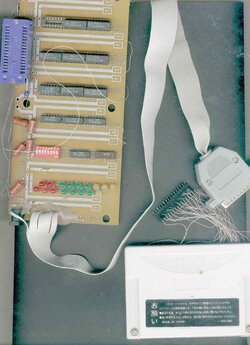Hi everybody. A few days ago I've finally finished my homebrew Backup RAM reader/writer. So now I can backup/restore RAM image. But processing full RAM can take a lot of time (up to 3-4 minutes) 'cause I haven't optimized software yet (and LPT sucks), and It's kinda uncomfortably backuping/restoring all RAM when I need only 21 blocks....
So does anybody have info about RAM data format? Now the only things i know that block size is 64 bytes, saves are stored in clusters of 4*n blocks (multiple 100h), and damn, saves are scaterred all over the RAM. Save starts at XXX00(hex) with 80 00 00 XX (hex), and if XX is 01, then save is incessant.
So does anybody have info about RAM data format? Now the only things i know that block size is 64 bytes, saves are stored in clusters of 4*n blocks (multiple 100h), and damn, saves are scaterred all over the RAM. Save starts at XXX00(hex) with 80 00 00 XX (hex), and if XX is 01, then save is incessant.


